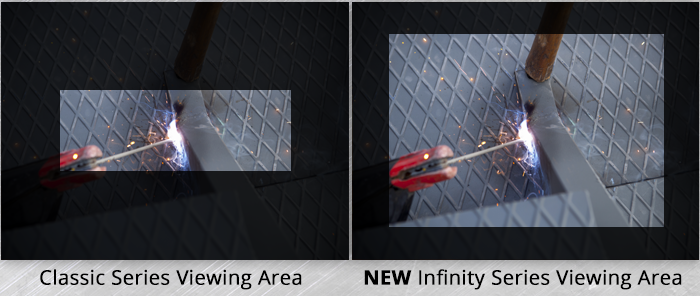DC or AC Stick Welding? It’s an ever-changing debate that’s evolved as welding itself has advanced. There’s a lot of once-good advice out there that’s become outdated as technology has improved for both current types. So, as of the year 2015, who’s king of the currents?
Direct Current
Direct current’s pretty simple. You’re either using a negative polarity or a positive polarity but never both during a weld. It’s just one direct current. Because the current doesn’t change polarity, you’ll generally get a smoother welding output. While AC output has become a lot more stable in recent years, many welders still swear by DC as the Holy Grail of currents. The truth is, DC is best but only in the right situations.
So what’s the right situation? Here’s where DC should be broken out into negative (DCEN) and positive (DCEP). DCEN works by building up heat on a negatively charged electrode. This increases the electrode’s melting rate and decreases the depth of the weld. In other words, it’s best used on jobs where you’re looking for a shallow penetration or your worried about punching through your workpiece. DCEP uses the opposite: positively charged electrodes. It has a deeper weld penetration.
It should be noted that DC welders have less flutter or fluctuation in their arc than AC. While this might not make a big difference using lighter rods and material, it will mean stronger welds with heavier stuff, thus making it preferable for pipe welding or jobs that need more strength.
Alternating Current
Alternating current doesn’t stick with a positive or negative polarity but switches between the two extremely fast (over 100 times a second). In the past, it’s been a less preferred option among welders because of this fluctuation in polarity. During the switch between positive and negative, the current passes a point right in the middle where there’s no output at all. However, by using rods specifically designed for AC, this is no longer a problem.
So what situations are right for AC welds? The first is pretty straightforward. Because your normal American household outlets are AC, it’s often the easiest power source to access. Tapping DC power sources generally requires special welding machine features that convert AC to DC or using of the DC generator.
AC welding is also handy in spots where DC would cause arc blow problems. These are situations where the arc blows out of the point, common when using large diameter electrodes at higher current levels.
Which Is Better?
As is common in welding, choosing a winner all depends on your situation. What power sources are you going to be using? What material do you generally use? What type of welding jobs do you usually perform? The best answer might be a welding machine that has both AC and DC functionality. To help you figure out what’s best for you, we’ve listed some of our favorite welders that use AC, DC, or both below.
 AC Welders
AC Welders
Lincoln Bulldog 5500
Miller Thunderbolt XL 225
Hobart Stickmate 205
DC Welders
RazorWeld Arc 170
Miller Millermatic 190
Miller Millermatic 350P
Both AC and DC Welders
Miller
Syncrowave 210
Miller Dynasty 200 DX
Lincoln Aspect 375






